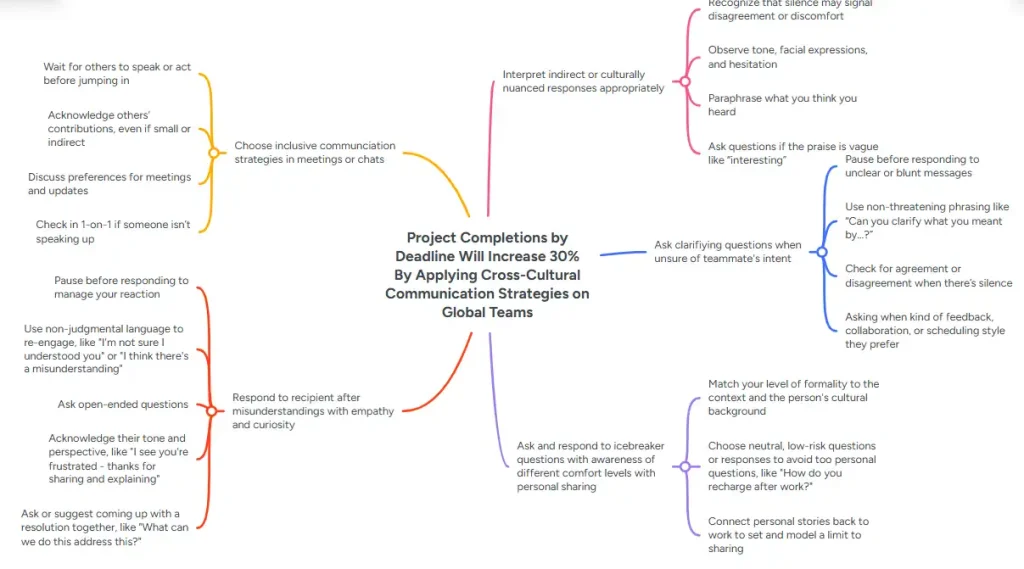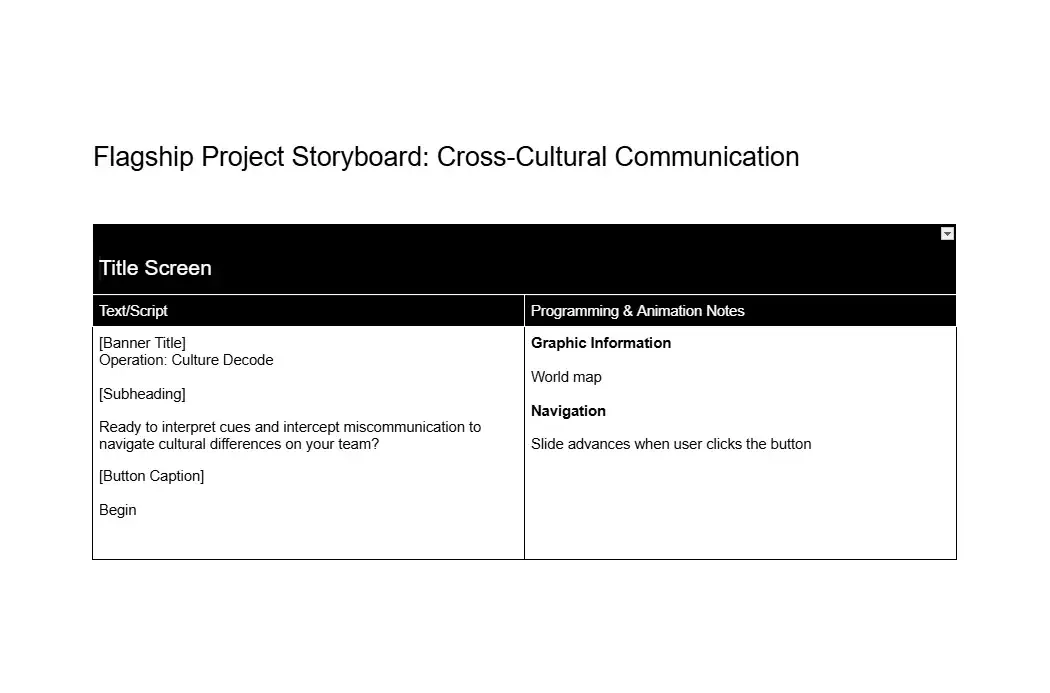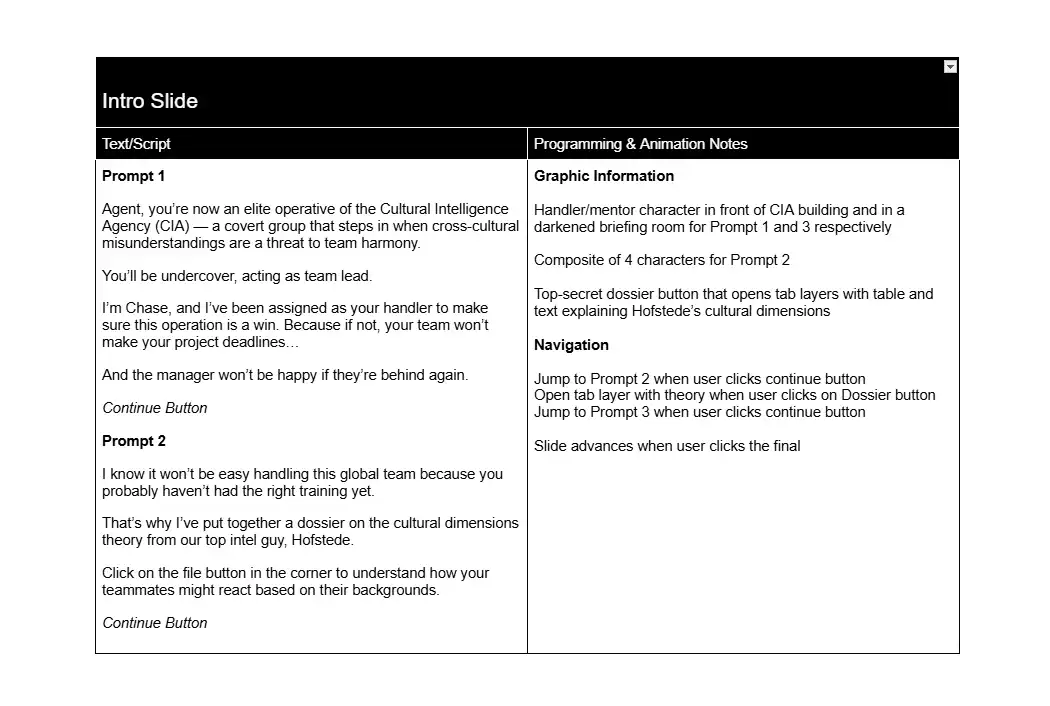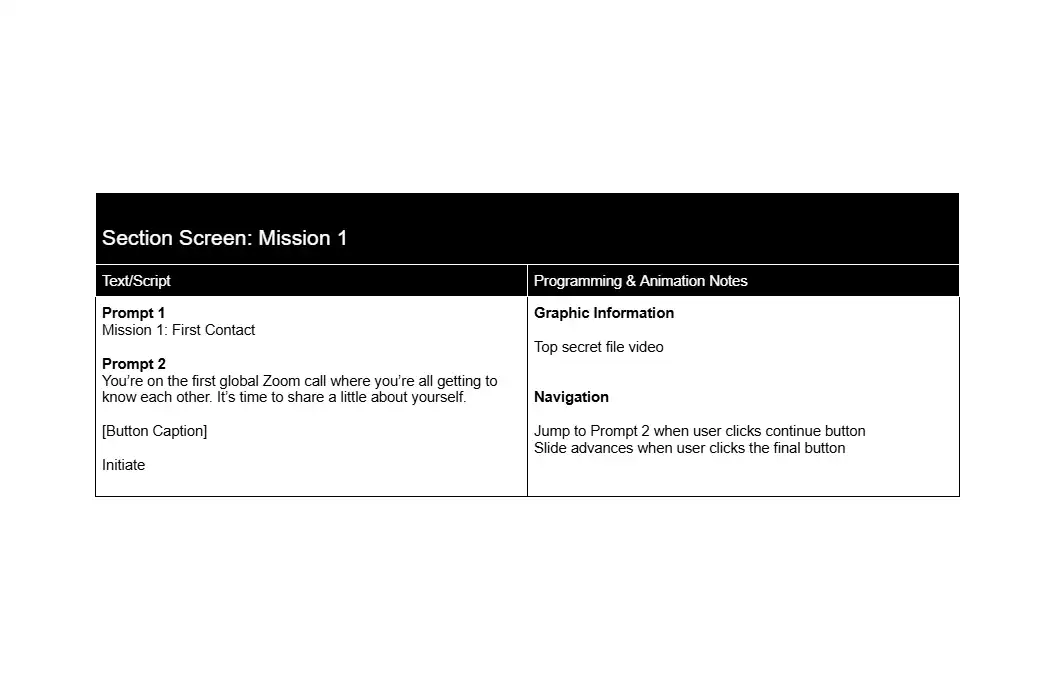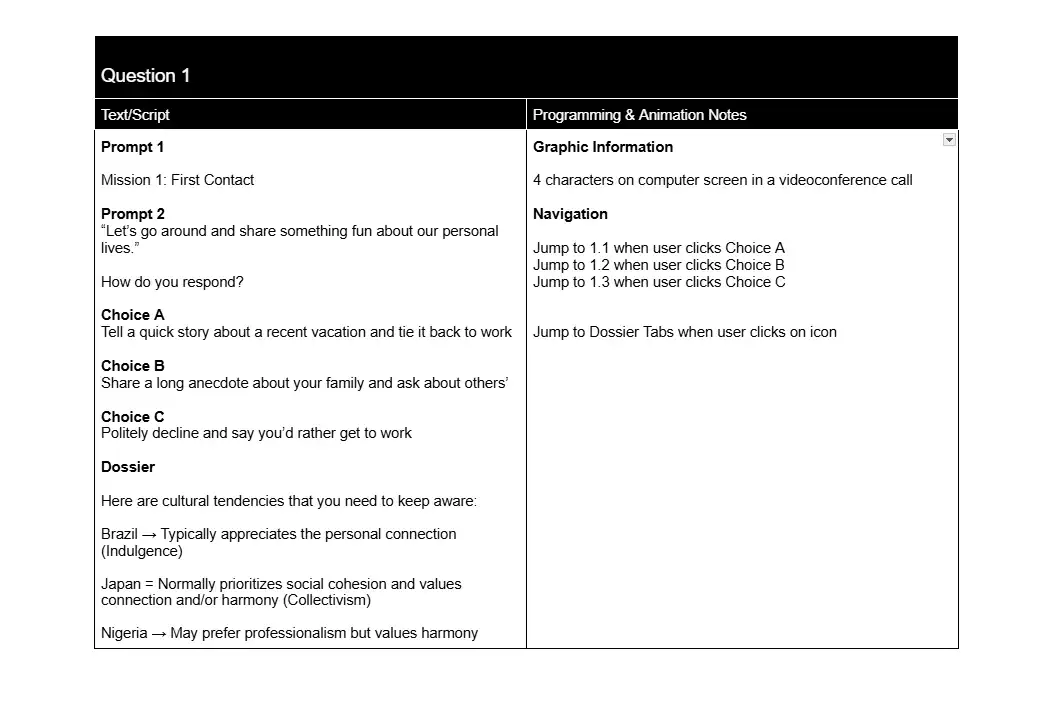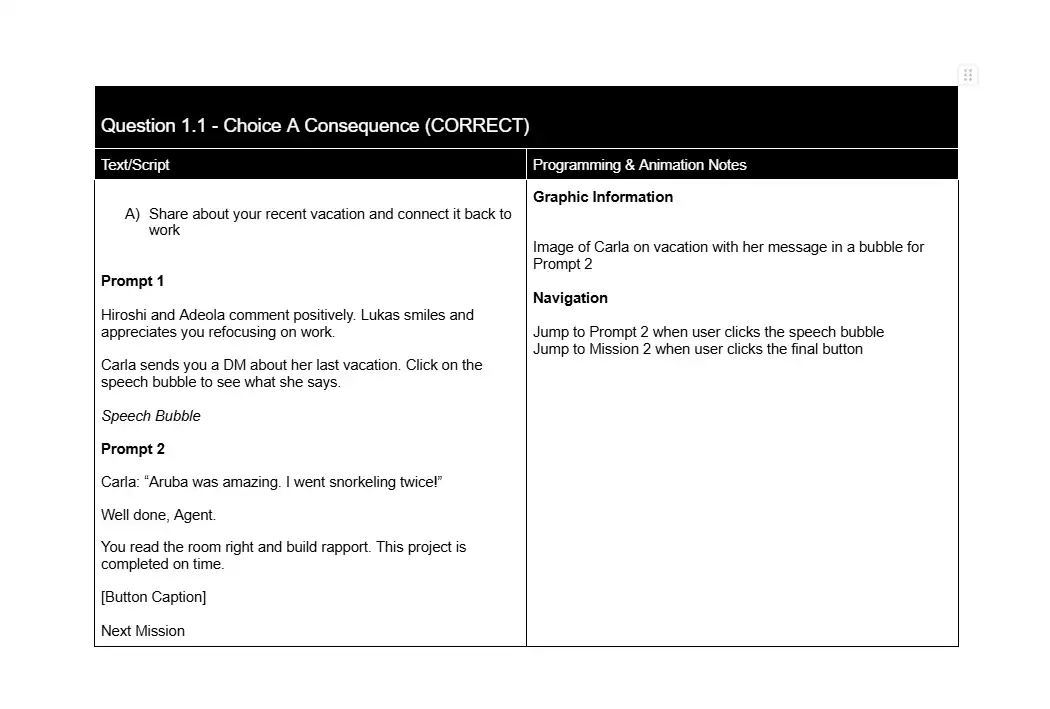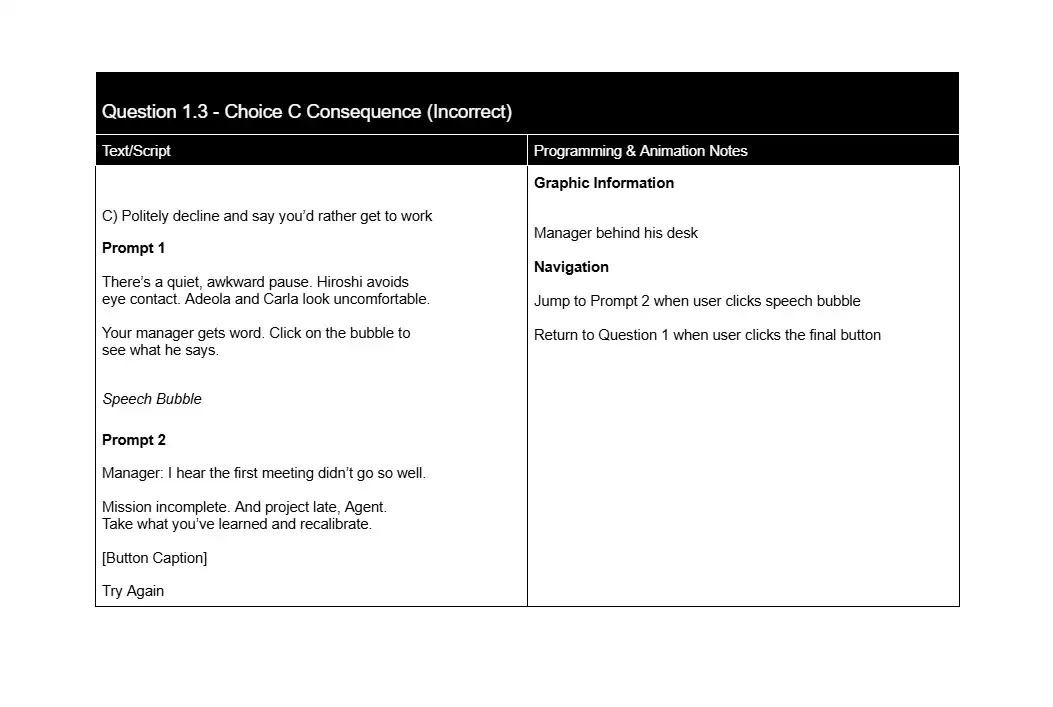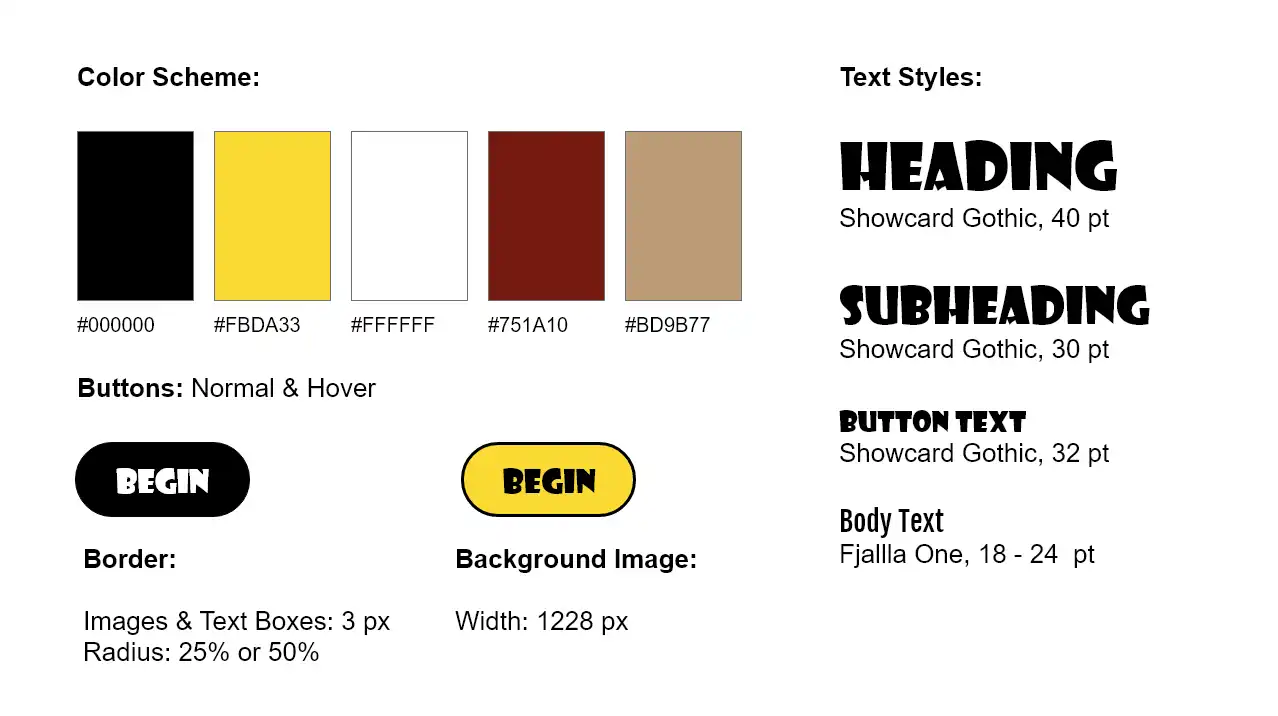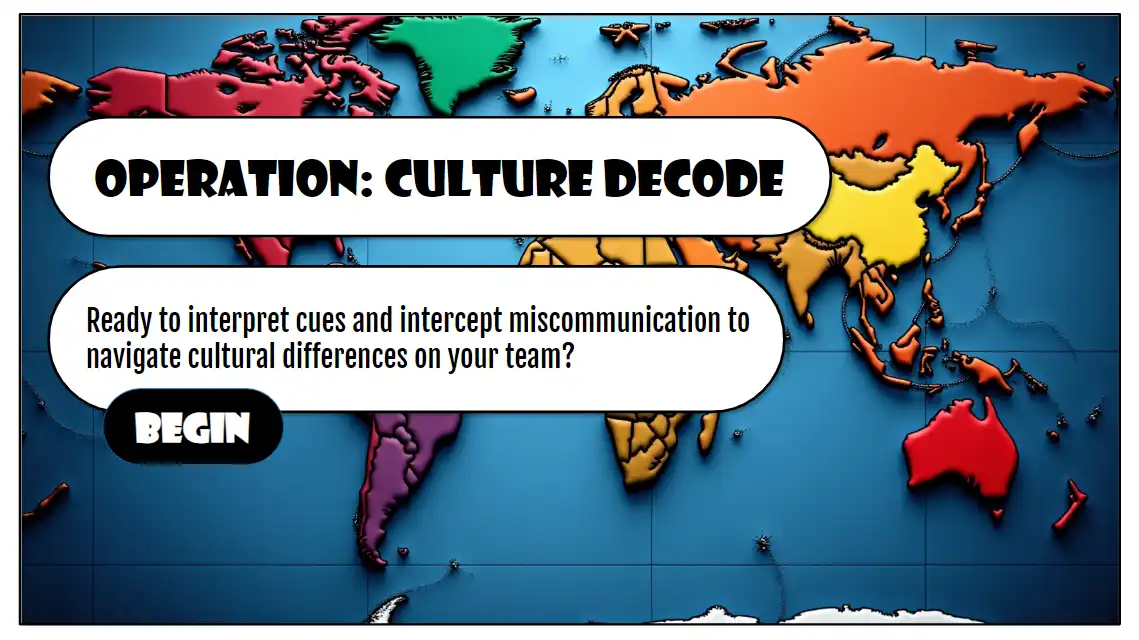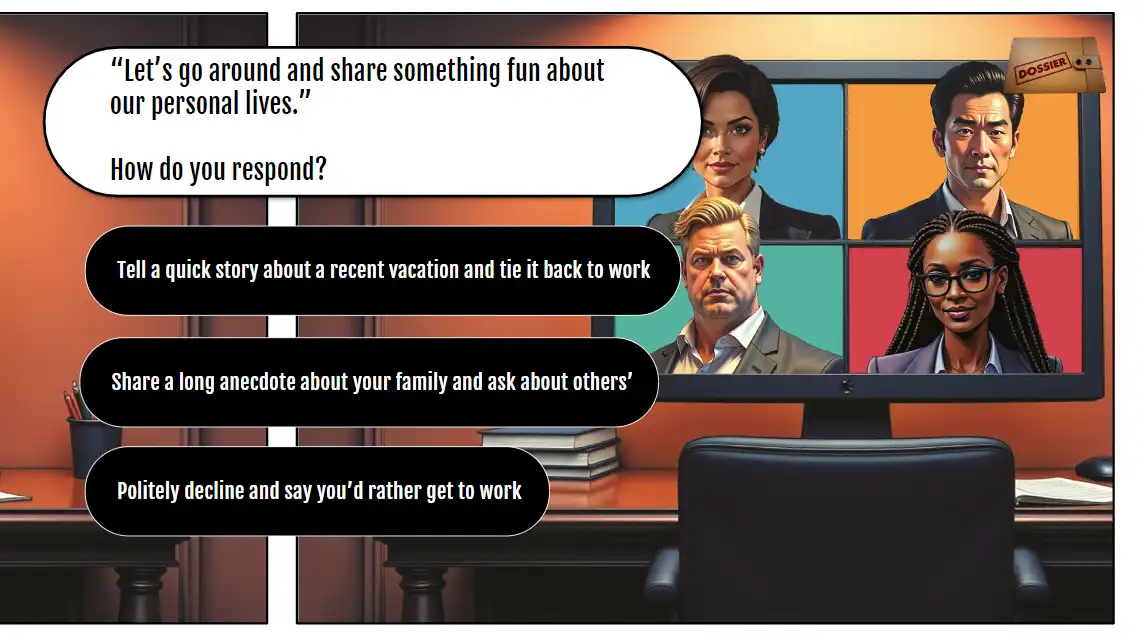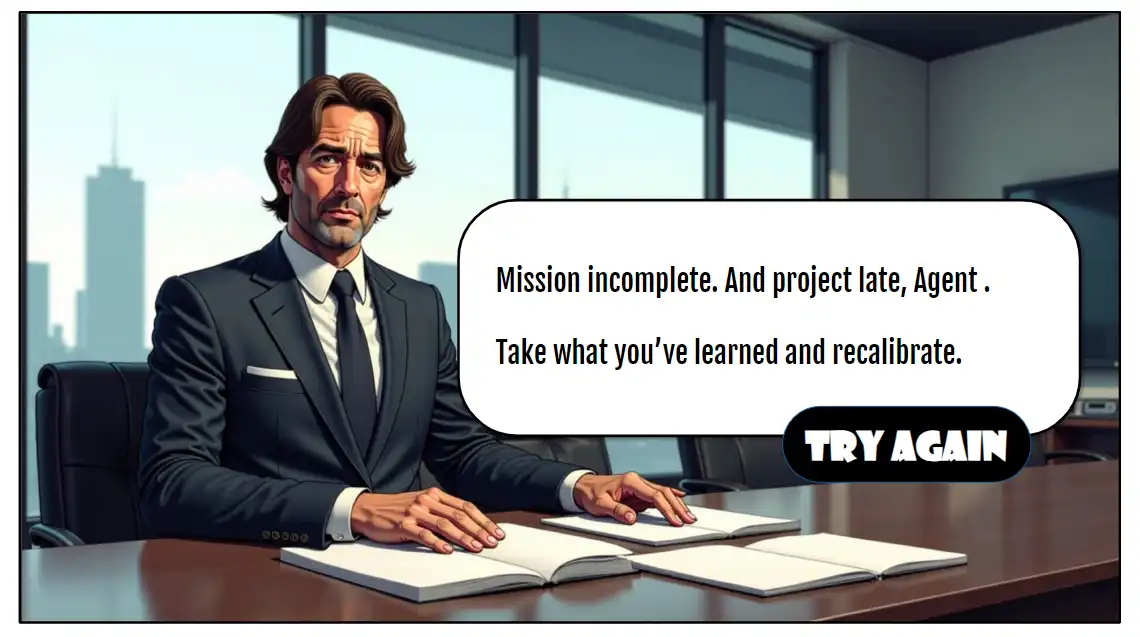Scenario-Based Cross-Cultural Communication eLearning
I designed and authored a scenario-based elearning experience in Articulate Storyline 360 that equips their global teams with the skills to navigate cross-cultural dynamics. The goal is to help learners identify, prevent, and resolve miscommunications, using immersive, real-world scenarios, so that they can increase the number of projects completed by deadline.
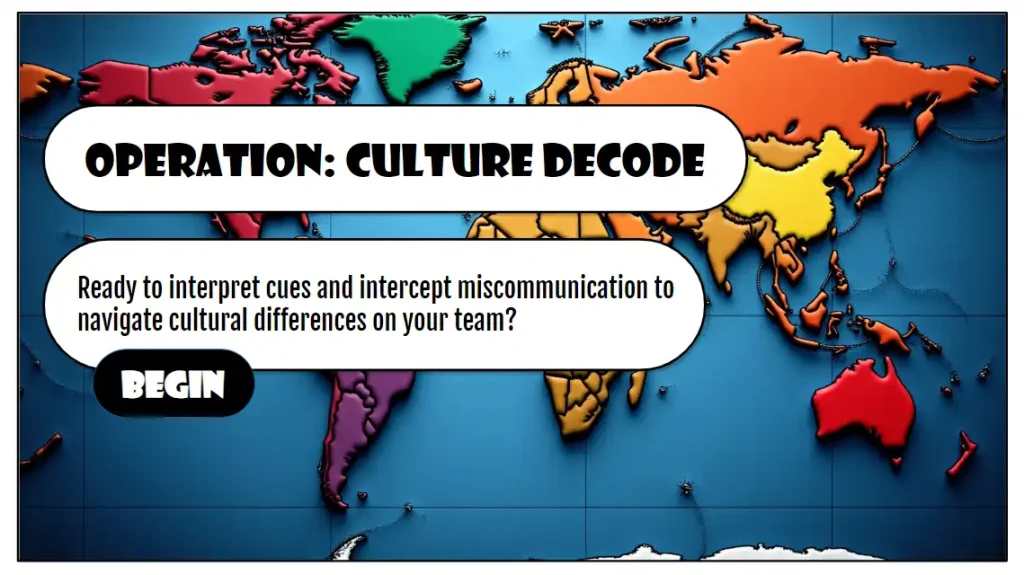
Overview
Audience
Responsibilities
Instructional Design, eLearning Development, Graphic Design, Animated Video Creation & Editing
Tools
MindMeister, Adobe XD, Adobe Illustrator, Adobe After Effects, Articulate Storyline 360, Microsoft & Google Suite Tools, Chat GPT, OpenArt.ai
Analysis
The fictitious Canadian marketing agency, Loudbox, engaged me following a company-wide productivity study that uncovered critical performance gaps. The analysis revealed that several of Loudbox’s global teams were underperforming in key KPIs—particularly the number of projects delivered on time and client satisfaction ratings—compared to their largely monocultural, single-country teams. These findings highlighted the need for a targeted learning intervention to address cross-cultural collaboration challenges and improve team outcomes.
I was brought in to consult on whether the KPI shortfalls could be addressed through targeted training. After reviewing the productivity report, I recommended that managers conduct a survey to pinpoint the specific factors contributing to lower performance. I collaborated with HR to design the survey, which was distributed to all agency teams to identify the root causes of the discrepancies in outcomes.
Survey results revealed that employees on global teams were more likely to experience misunderstandings—such as misinterpreting blunt comments, misreading silence after feedback, and clashing over leadership styles—which often led to conflict and disrupted workflow. Several employees also noted that they had never previously worked with colleagues from certain countries, and they suspected that some of the behaviors they found disruptive or confusing might be culturally based.
Additionally, the Toronto headquarters employed several recently immigrated staff members who also reported cultural misunderstandings. These findings suggested that both global and local teams would benefit from cross-cultural communication training.
In a follow-up meeting with managers, HR, and a SME in cross-cultural dynamics, we concluded that there was a clear knowledge and skills gap that could be effectively addressed through a well-designed learning solution.
In alignment with the RIPPLES framework—which guides instructional designers to consider Resources, Infrastructure, People, Policies, Learning, Evaluation, and Support during needs analysis—I examined learner demographics, time constraints, and delivery modalities.
While Loudbox is a Canadian company with over 50% of staff based in Toronto, most of its global team members work remotely from Brazil, Germany, Nigeria, and Japan. In-person training was therefore not feasible, and the multiple time zones made virtual instructor-led training logistically challenging. Asynchronous eLearning emerged as the most practical delivery mode, allowing employees to learn at different times and in different locations without disrupting workflow.
To ensure the training was grounded in a credible, evidence-based framework, I researched cultural models that could help explain tendencies and patterns in workplace behavior. I selected Geert Hofstede’s Cultural Dimensions Theory, a well-established model that originated from extensive IBM employee surveys. This framework provides valuable insights into cultural differences and their business implications, helping employees better interpret the words, tone, and behaviors they encounter across cultures.
However, given the fast-paced nature of work in a marketing agency, teams would not have the time or patience for lengthy videos on theory. They needed an engaging, scenario-driven approach that would bridge theory and practice.
Consequently, the Loudbox managers and I agreed to design a scenario-based eLearning experience in Articulate Storyline that would immerse employees in realistic cross-cultural challenges and equip them with effective, culturally responsive strategies they could apply immediately on the job.
After further analysis of the survey results and consultation with the SME, I identified that the most frequent communication breakdowns occurred during Zoom videoconference calls, Slack messaging, and email exchanges. These issues typically stemmed from misinterpretations of blunt critiques, prolonged silences, unclear tone, and a lack of awareness or acknowledgment of others’ feelings, requests, and contributions.
I then identified the key actions that an effective cross-cultural communicator must take to recognize, prevent, and resolve communication breakdowns.
Action Mapping
Using Bloom’s Taxonomy, I developed an action map outlining the observable, measurable tasks a team member should perform to act and respond in culturally responsive ways when navigating scenarios with global teams.
The action map organizes culturally sensitive communication skills that help prevent or resolve conflicts into five core categories: inclusive approaches, interpretation of responses, asking for clarification, asking and responding to personal questions, and resolving misunderstandings.
Once the managers and SME approved the action map, I proceeded to the design phase of the instructional solution.
Design
Text-Based Storyboard
The first step was to create a text-based storyboard featuring four characters from different countries and four scenarios aligned with the cross-cultural communication skill categories in the action map. This approach supports the Universal Design for Learning (UDL) guideline of Multiple Means of Representation, fostering greater understanding and respect across cultures.
The four scenarios were:
- Asking and responding to personal questions over a Zoom call
- Interpreting responses and asking for clarification over Slack when receiving feedback on a proposed idea
- Choosing inclusive communication strategies during presentation preparation
- Resolving misunderstandings during a product update
Naturally, some skill categories were integrated into multiple scenarios.
Hofstede's Cultural Dimensions Theory
In keeping with Malcolm Knowles’s Adult Learning Theory—specifically the Orientation to Learning principle—each scenario was grounded in familiar workplace contexts to ensure immediate relevance and applicability.
After outlining the actions and dialogues for each scenario, I incorporated Hofstede’s Cultural Dimensions Theory by providing concise, easy-to-scan reference notes the learner could use as “clues” to uncover the correct course of action:
- Power Distance Index – Perceptions of hierarchy and authority
- Collectivism vs. Individualism – “Me” vs. “We” orientation
- Uncertainty Avoidance Index – Comfort level with ambiguity and risk
- Femininity vs. Masculinity – Competitive/assertive vs. collaborative/caring values
- Short-Term vs. Long-Term Orientation – Prioritizing traditions or immediate results vs. future goals
- Restraint vs. Indulgence – How openly people express enjoyment and emotions
Text-Based Storyboard Samples
Explore the initial slides of the introduction and first scenario. Click on the images for a closer look.
Secret Agent Theme
To keep the theory from feeling overly dry or academic—especially for creative professionals in a design-focused marketing agency—I gamified the learning experience by framing it as a comic book–style secret agent storyline. Each scenario became a mission, and completing all missions meant successfully carrying out the full undercover operation.
AI Tools
I used ChatGPT to help come up with wording that matched the secret agent theme. For visuals, I generated photorealistic comic-style characters and environments using Freepik and OpenArt AI, refining them in Adobe Illustrator for detail and cohesion. I then built visual mockups in Adobe XD, creating a branding board to maintain consistency in typography, color palette, and overall style.
Feedback
After sharing mockups for the introduction and first scenario with the SME, I incorporated feedback, finalized adjustments, and proceeded to design the remaining scenarios—completing the approved assets in time for development.
Visual Mockup Samples
Explore the low- and high-fidelity wireframes for the introduction and first scenario. Click on the images for a closer look.
Development
Process
Closely following the approved mockups, I recreated the design in Articulate Storyline 360 with relative ease. To maximize learner engagement, I incorporated a variety of features beyond choosing the correct response, which you can explore below.
In the introduction scene, I used the slides to:
- Establish the secret agent world and immersive narrative
- Explain the mission objectives and purpose of the training
- Highlight where to find quick-reference notes on Hofstede’s Cultural Dimensions Theory
This sequencing aligns with Mayer’s Pre-Training Principle from the 12 Principles of Multimedia Learning. By establishing foundational context, clarifying objectives, and pointing learners toward concise theory references, I helped prime them for success before engaging in the scenarios.
After sharing the introduction and first scenario with stakeholders, they expressed enthusiasm for the innovative, narrative-driven approach and approved moving forward with the development of the remaining modules.
Features
Photorealistic Comic Book Style Graphics - UDL Multiple Means of Engagement
By incorporating vibrant, highly detailed images—particularly for the four fictional characters representing diverse countries—the cross-cultural communication narrative comes to life far more vividly in the learner’s mind than it would with flat vector illustrations.
In alignment with Universal Design for Learning’s Multiple Means of Engagement guideline, illustrated storytelling fosters interest by cultivating joy and play, supports inclusivity by representing diverse identities, and promotes metacognitive reflection on both self and others.
Mentor Character/ Secret Agent Handler
The mentor character—portrayed as the learner’s supervisor or “handler” in the world of secret agents—reinforces the consequences of incorrect decisions as well as the rewards of correct ones.
According to Keller’s ARCS Model of Motivation, satisfaction is a key driver of sustained motivation. By acknowledging and praising correct choices, the design increases learner satisfaction, which in turn encourages persistence, strengthens recall, and supports real-world application.
Interactive Tabs for Cultural Dimensions Theory
Any theoretical framework has its complexities and limitations. To address this, I designed a tabs interaction that allows learners to explore the six categories of Hofstede’s theory at their own pace. This approach enables those who wish to dive deeper to do so immediately, while allowing others to proceed directly to the scenarios without delaying their progress into the engaging storyline.
In addition, each scenario includes a concise summary of the relevant points from the theory, illustrating how team members from the four countries might respond. This way, learners can begin applying the concepts without needing a perfect grasp of every nuance in advance.
Interactive Speech Bubbles for Consequences - Michael Allen’s Seven Magic Keys of eLearning
In alignment with Michael Allen’s Seven Magic Keys of eLearning, I incorporated intrinsic feedback by showing learners the results of their choices through character dialogue and actions. Learners can click on speech bubbles from team members or the manager character to see how their decision impacts a hypothetical colleague.
This approach reinforces the importance of considering whether to use specific culturally responsive strategies. This type of formative assessment that included feedback went beyond simply indicating whether a choice was right or wrong—learners received context-rich responses that deepened understanding and encouraged reflection.
Animated Videos using OpenArt AI and Adobe After Effects
Drag & Drop Hotspot Quiz for Culturally Sensitive Language - Gagne's Nine Events
Providing concrete examples of language that can be used in real-world contexts helps learners process the information and, ideally, apply similar wording when navigating future cultural misunderstandings.
The interactive quiz guides learners in distinguishing between potentially culturally insensitive responses and those that are broadly appropriate, even if they do not fully recall Hofstede’s theory later on.
After completing the four scenarios, a drag-and-drop activity reinforces key concepts and supports future application—aligning with the ninth event in Gagné’s Nine Events of Instruction, which emphasizes enhancing retention and transfer of learning.
Implementation & Evaluation
In alignment with the Kirkpatrick Model of Evaluation, I would gather informal feedback from team members, analyze LMS data, and review post- survey results and performance reports to assess impact.
The learning solution would be rolled out to all teams, with LMS analytics confirming successful completion of the scenario-based training. Anecdotally, I anticipate I would receive positive feedback noting that the creative design was both intriguing and enjoyable, and that it explained cultural differences previously unknown to many learners, just as I did from colleagues.
HR would conduct a follow-up survey, and ideally, many participants would report that the training gave them a new perspective on misunderstandings and conflicts they had previously experienced. Over the following months, HR would observe fewer team complaints and managers would note a corresponding increase in on-time project completions—matching the performance levels of Canadian-based teams.
Testimonials
EAP Professor & Trained Instructional Designer
I had the chance to attend one of Ruth’s training courses related to web design, it was the greatest resources I’ve ever had ! The structured curriculum was more than just training, it was a comprehensive roadmap, guiding us through the critical steps of building our websites, it equipped us with the tools and clarity to tackle challenges when “first time” building a website. I highly recommend Dynamite content and coaching!
WordPress Web Design Student
Founder of Fementity
Results & Takeaways
Motivating Thematic Narrative
Possible Additions
Summary
The unique, playful style of the scenario-based eLearning can motivate teams to complete the training successfully, engaging them with the storyline and prompting them to reflect on their own contributions to cross-cultural miscommunication.

